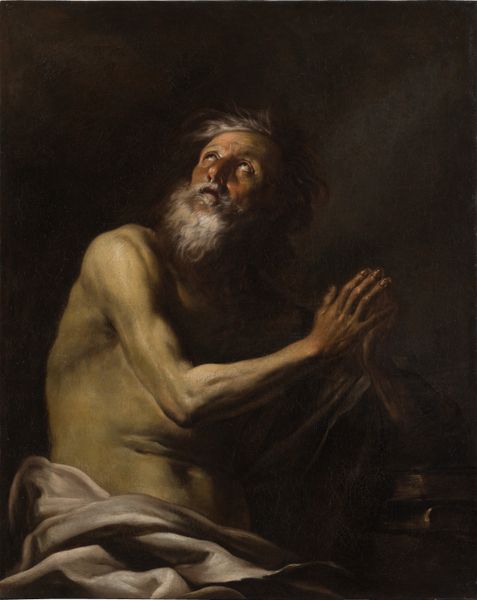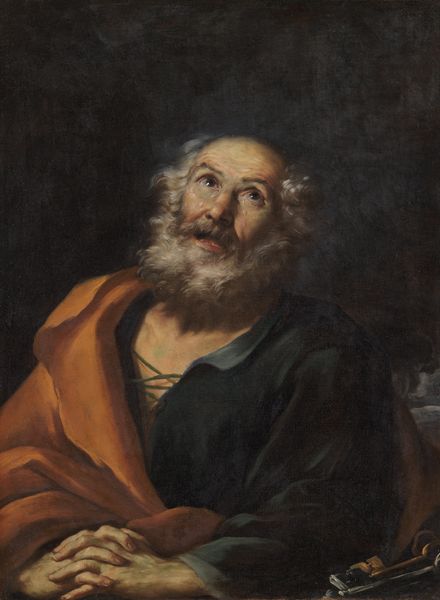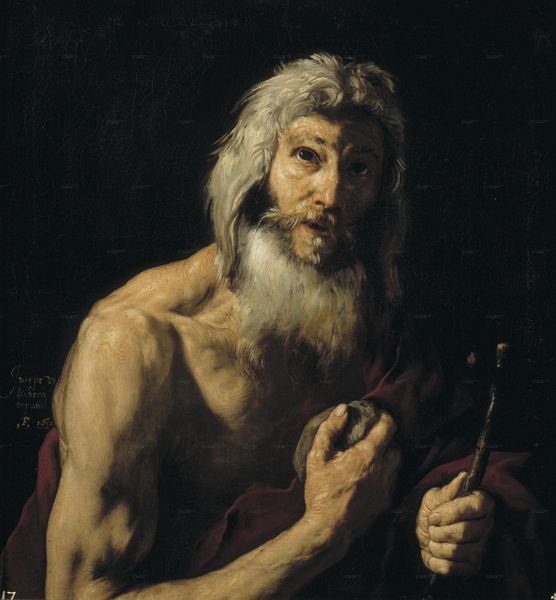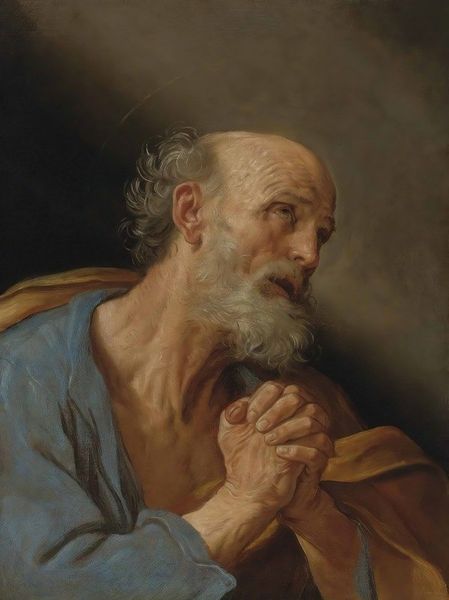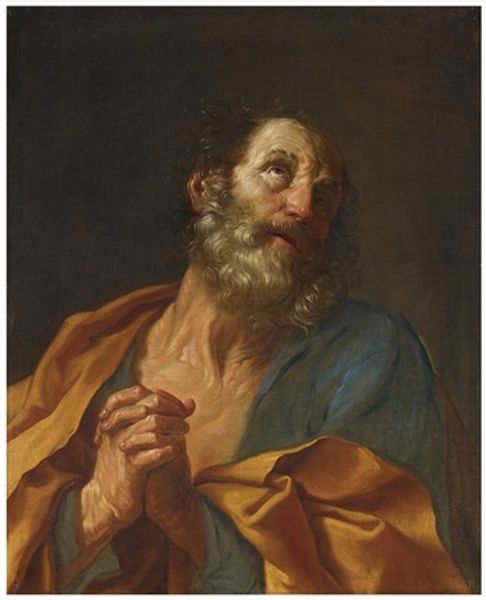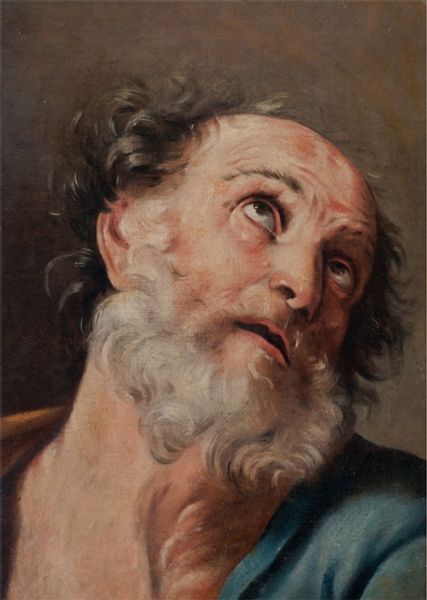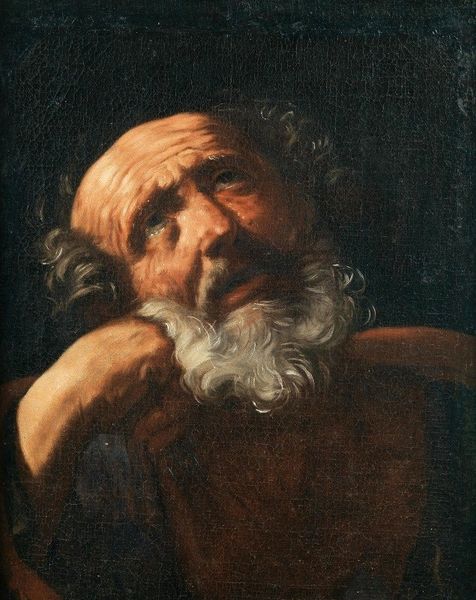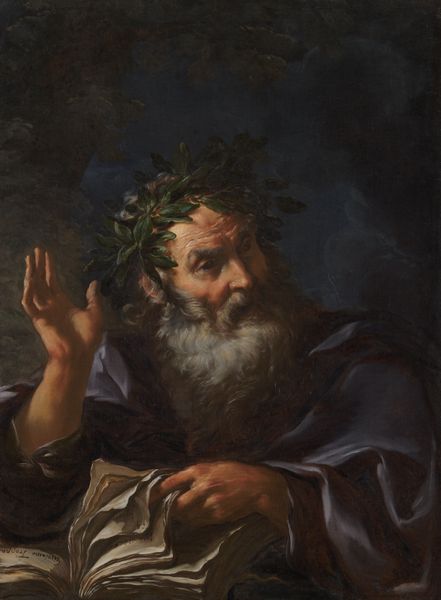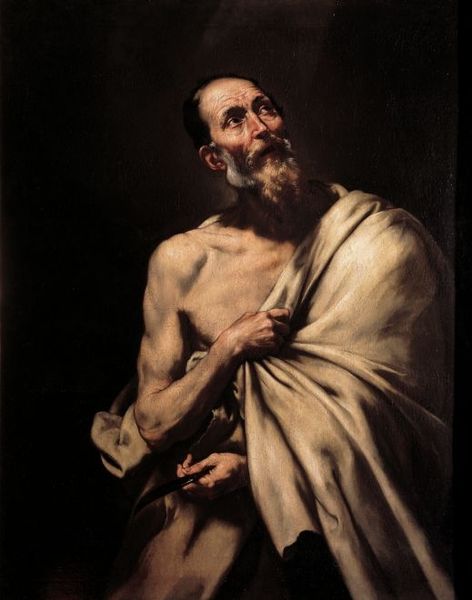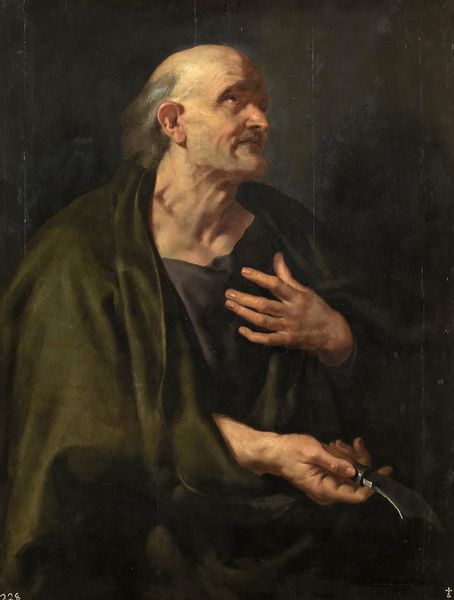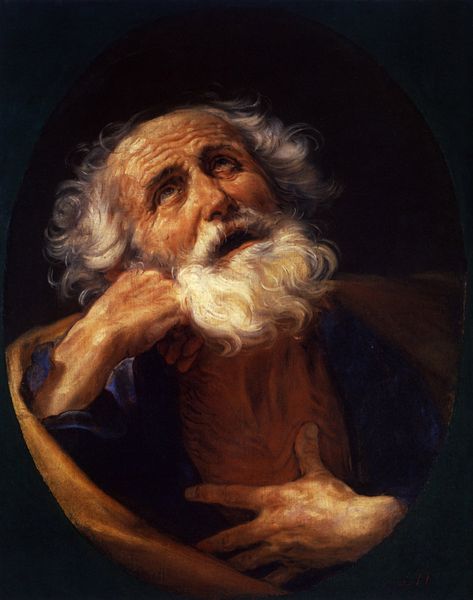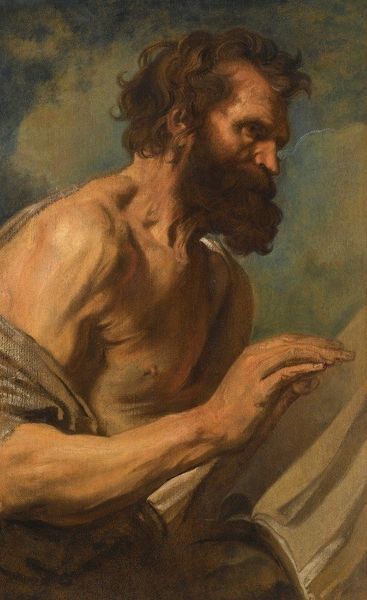
painting, oil-paint
#
baroque
#
painting
#
oil-paint
#
christianity
#
history-painting
#
italian-renaissance
Dimensions: 62.5 x 48 cm
Copyright: Public domain
Curator: Here we have Guido Reni’s “St. Peter Penitent,” created around 1600 using oil paints. Editor: What strikes me immediately is the raw emotion—the profound sense of grief etched on St. Peter’s face. The artist truly captured a vulnerability that resonates deeply, even now. Curator: Absolutely. Reni painted this during the height of the Baroque period. The Counter-Reformation was in full swing, and the Catholic Church was keenly interested in promoting images of repentance and spiritual reflection. This piece serves almost as a visual sermon. Editor: The intense chiaroscuro – the dramatic contrast between light and dark – certainly amplifies the emotional weight. It almost feels like Peter is emerging from darkness, spotlighted in his moment of despair and reckoning with himself. Where does he go from here? Curator: Precisely. Note how Peter’s gaze is directed upwards, possibly a gesture of supplication. Paintings such as this weren't merely aesthetic objects. They were designed to move the faithful and prompt introspection and renewed religious zeal in their own lives, too. The composition facilitates piety through emotion. Editor: It's interesting how art functions in such an active and direct dialogue with political and social reform. You look at Peter’s face and the lines etched by time and hardship and see the weight of human failing. He is very relatable in this moment of personal crisis and searching. Curator: Indeed. Reni cleverly utilizes art history to meet institutional agendas, making the figure appear incredibly human even in a holy context. It speaks volumes about art's capability as a societal tool. Editor: Reflecting on St. Peter’s experience here, it's a humbling visual reminder that faith also incorporates accountability, not simply absolution. It asks a lot of questions that are very human-focused. Curator: Yes, truly considering this work gives us pause about what kind of accountability is placed upon whom. Editor: The beauty of revisiting pieces like this reminds me that art history isn't something of the past, it helps shape our future.
Comments
No comments
Be the first to comment and join the conversation on the ultimate creative platform.
